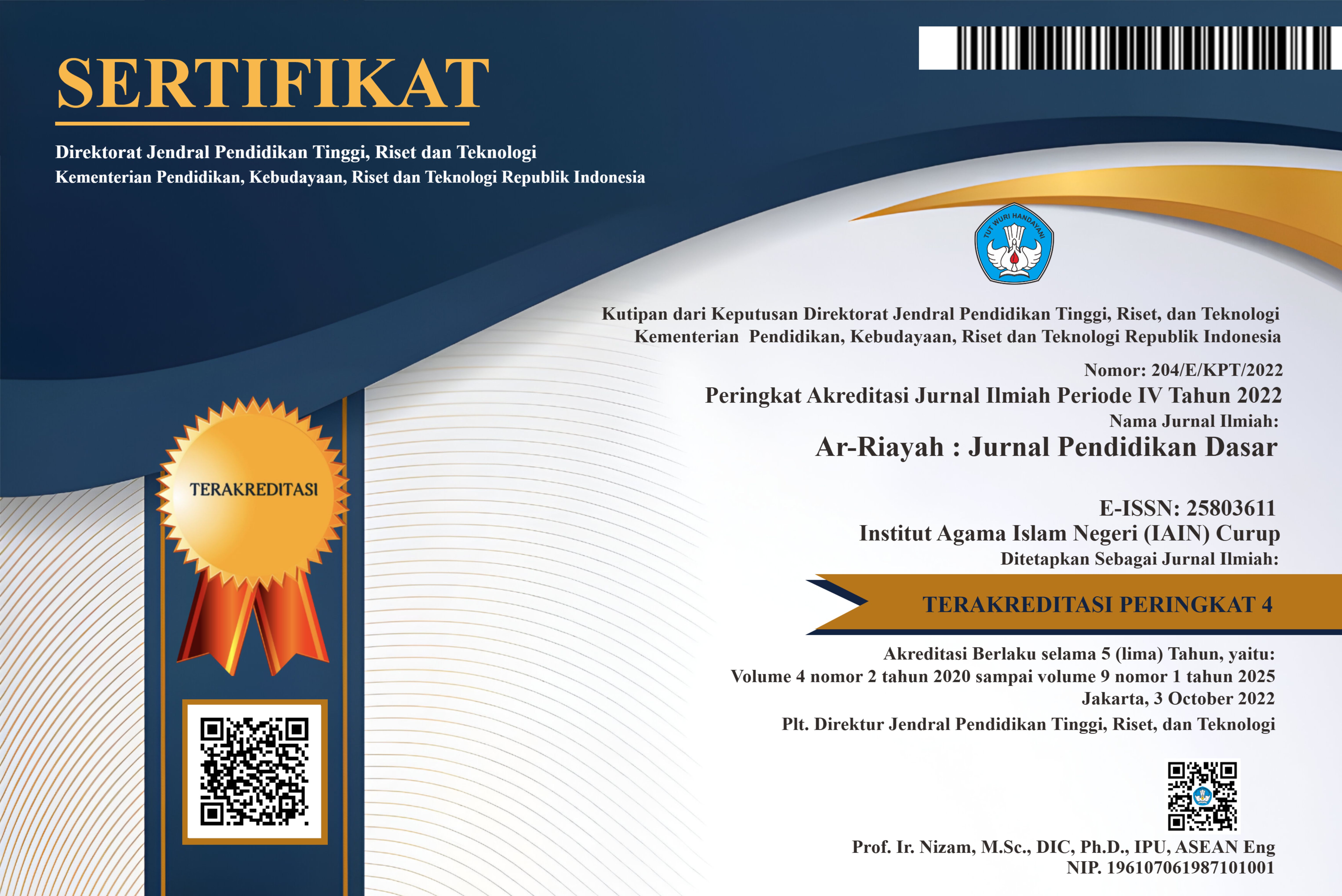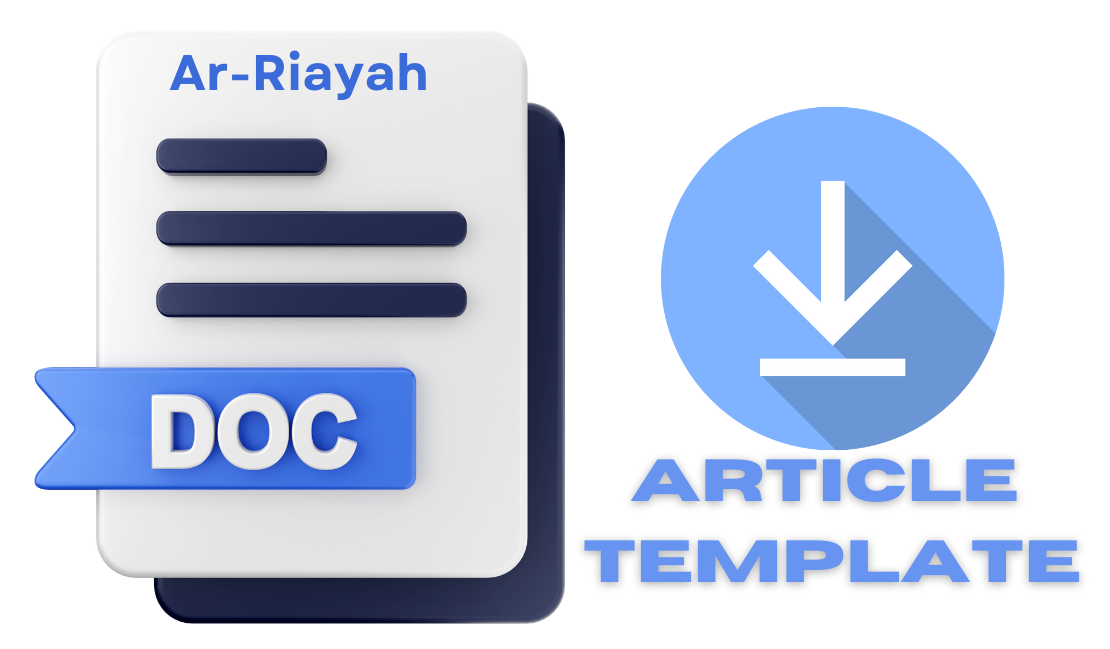Pengaruh Media Pembelajaran Google Classroom Terintegrasi dengan Kahoot Terhadap Minat dan Hasil Belajar Siswa Mata Pelajaran IPA Materi Siklus Air
DOI:
https://doi.org/10.29240/jpd.v6i1.4348Keywords:
Learning Media, Google Classroom integrated with Kahoot, interest, the students learning outcomesAbstract
Googgle Classroom learning integrated with Kahoot is online learning that utilizes two learning media into a series of fun and meaningful learning process flows for students. Google Classroom as a classroom for teachers and students that is integrated with Kahoot which is a quiz game application where each question refers to the learning material. This study aims to determine the effect of learning google classroom integrated with kahoot on the interest and learning outcomes of students in science subjects water cycle material. This is quantitative study with quasi-experimental research design (Quasi Experiment) with sample of 52 fifth grade students consisting of 26 class V A (experimental class) and 26 class V B (control class) at MI Miftahul Akhlaqiyah, Ngaliyan, Semarang City. Analysis using normality test, homogeneity, and independent t test. First, this learning can increase students' interest in learning where the calculation results are obtained t = 7.071; df= 50; p= 0.000. Second, this learning can improve learning outcomes where the calculation results are obtained t = 3.919; df= 50; p= 0.000. Thus, this learning can be used to increase student interest and learning outcomes.
Downloads
References
Badarudin, Muhammad Afandi. Perencanaan Pembelajaran Di Sekolah Dasar Dengan Memasukkan Pendidikan Budaya Dan Karakter Bangsa. Alfabeta Bandung. Vol. 59. Bandung: Alfabeta, 2011.
Darmawan, Akhmad. “Pengaruh Penggunaan Kahoot Terhadap Hasil Belajar Materi Ruang Lingkup Biologi.†EduTeach : Jurnal Edukasi dan Teknologi Pembelajaran 1, no. 2 (2020): 91–99.
Diplan, Diplan, and Zona Ratih Alkindi. “Analisis Penerapan Media Pembelajaran Berbasis E-Learning (Google Classroom).†Neraca: Jurnal Pendidikan Ekonomi 5, no. 2 (2020): 27–32.
Erstad, Ola, Oystein Gilje, and Thomas De Lange. “Re-Mixing Multimodal Resources: Multiliteracies and Digital Production in Norwegian Media Education.†Learning, Media and Technology 32, no. 2 (2007): 183–198.
Iskandar, Wahyu. “Kemampuan Guru Dalam Berkomunikasi Terhadap Peningkatkan Minat Belajar Siswa Di SDIT Ummi Darussalam Bandar Setia.†AR-RIAYAH : Jurnal Pendidikan Dasar 3, no. 2 (2019): 135.
Iwamoto, Darren H., Jace Hargis, Erik Jon Taitano, and Ky Vuong. “Analyzing the Efficacy of the Testing Effect Using KahootTM on Student Performance.†Turkish Online Journal of Distance Education 18, no. 2 (2017): 80–93.
Jamaluddin, Dindin, Teti Ratnasih, Heri Gunawan, and Epa Paujiah. “Pembelajaran Daring Masa Pandemik Covid-19 Pada Calon Guru : Hambatan, Solusi Dan Proyeksi.†Karya Tulis Ilmiah UIN Sunan Gunung Djjati Bandung (2020): 1–10. http://digilib.uinsgd.ac.id/30518/.
Kurniasari, Wening, Murtono Murtono, and Deka Setiawan. “Meningkatkan Minat Belajar Siswa Menggunakan Model Blended Learning Berbasis Pada Google Classroom.†Jurnal Educatio FKIP UNMA 7, no. 1 (2021): 141–148.
Licorish, Sherlock A., Helen E. Owen, Ben Daniel, and Jade Li George. “Students’ Perception of Kahoot!’s Influence on Teaching and Learning.†Research and Practice in Technology Enhanced Learning 13, no. 1 (2018).
Muhammad, Yogga Mar, and Tetep. “Implementation of Kahoot Application To Improving Of.†Journal Civics & Social Studies 2, no. 1 (2018): 75–92.
Mulatsih, Bekti. “Penerapan Aplikasi Google Classroom, Google Form, Dan Quizizz Dalam Pembelajaran Kimia Di Masa Pandemi Covid-19.†ideguru: Jurnal Karya Ilmiah Guru 5, no. 1 (2020): 16–26.
Nuriyah, Nunung. “Evaluasi Pembelajaran: Sebuah Kajian Teori.†Jurnal Edueksos 3, no. 1 (2014): 73–86.
Pratama, M. Arifky, and Hesty Oktafiany. “Pengaruh Penggunaan Google Classrom Terhadap Minat Belajar Siswa Madrasah Tsanawiyah.†Cahaya Pendidikan 7, no. 2 (2021): 80–86.
Slameto. Belajar & Fakto-Faktor Yang Mempengaruhinya.Pdf. 5th ed. Jakarta: Rineka Cipta, 2010.
Downloads
Published
How to Cite
Issue
Section
Citation Check
License
Authors who publish with Ar-Riayah: Jurnal Pendidikan Dasar agree to the following terms:
Authors retain copyright and grant the journal right of first publication with the work simultaneously licensed under a Creative Commons Attribution-NonCommercial-ShareAlike 4.0 International License (CC BY-NC-SA 4.0) that allows others to share the work with an acknowledgment of the work's authorship and initial publication in this journal.
Authors are able to enter into separate, additional contractual arrangements for the non-exclusive distribution of the journal's published version of the work (e.g., post it to an institutional repository or publish it in a book), with an acknowledgment of its initial publication in this journal.
- Authors are permitted and encouraged to post their work online (e.g., in institutional repositories or on their website) prior to and during the submission process, as it can lead to productive exchanges, as well as earlier and greater citation of published work (See The Effect of Open Access).










